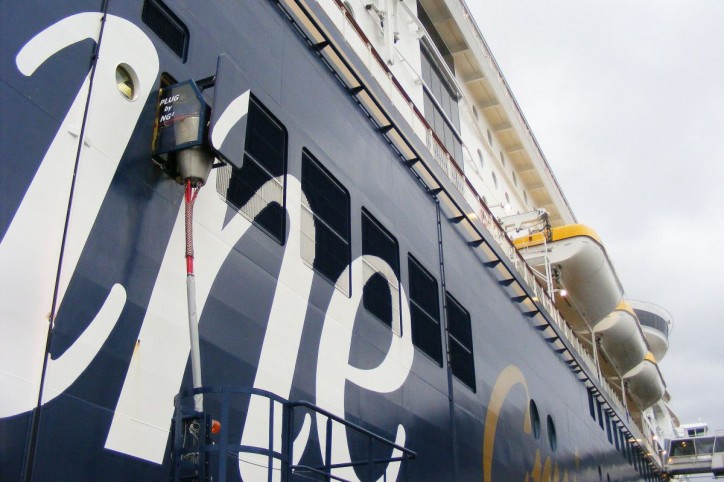The construction of the first onshore power supply plant for commercial vessels in the port of Kiel has begun. Taking part in the official first-cut-of-the-spade-ceremony marking the start of the construction works at the Norwegenkai Terminal were the Economics Minister of the federal state of Schleswig-Holstein, Dr Bernd Buchholz, Kiel’s Lord Mayor Dr Ulf Kämpfer, Port Director Dr Dirk Claus und Color Line GmbH Managing Director Dirk Hundertmark along with Lars Nürnberger, head of Kiel’s Siemens AG branch office. As of spring 2019, it will be possible to supply big cruise ferries with all the electrical power they need during the time they are berthed in Kiel.

“We are taking action to make a substantial contribution to air purification”, said Minister Buchholz. “The use of onshore power supply sustainably reduces ship emissions during time spent in port. We support this trend-setting project and beyond that advocate at government level to improve the overall economic conditions for the use of onshore power.”
The onshore power supply plant for the Norwegenkai is part of the BLUE PORT concept, in which further facilities of this kind are already being planned for Kiel.
Dirk Claus said: “Upon completion of the Norwegenkai onshore power plant, the Schwedenkai Terminal and the Cruise Shipping Terminal Ostseekai will also be equipped with onshore power supply facilities by 2020. It is our intention to provide half of all ship calls in Kiel with onshore power in future. Doing so means that we are setting a new European standard.”
The overall project owner for the Norwegenkai facility, which is being built by Siemens AG, is the PORT OF KIEL (see also CruiseMapper). Total investment costs amount to 1.3 million Euros. As part of the first-cut-of-the-spade ceremony, Minister Buchholz handed a state funding notification over to Kiel’s Lord Mayor.
Ulf Kämpfer said “With this onshore power supply plant we will reduce the levels of nitrous oxides and particle matters being emitted in the port area. In addition, less carbon dioxide will be emitted, which supports our climate protection policies.”
The ships of the Norwegian shipping company Color Line, the Color Fantasy and Color Magic, provide a daily link between Kiel and Oslo. Ships arrive at the Norwegenkai every morning at 10.00 and leave at 14.00. Annual power consumption during berthing times amounts to around four million kilowatt hours.
Color Line GmbH Managing Director Dirk Hundertmark said: “Our ships are equipped to take onshore power and have been connected to onshore power supply in Oslo since 2011 and in all our four Norwegian ports since 2017. Now Kiel is becoming the next port to provide the necessary infrastructure to further advance and support our strategy of environmental protection.”
The Norwegenkai onshore power supply plant has a maximum power rating of 4.5 Megawatts (MW) at 10 Kilovolt (KV) and a network frequency of 50 Hertz (Hz).
Lars Nürnberger, head of Kiel’s Siemens AG branch office, said: “The plant is tailored to the needs of the port and the shipping company. As a result of its high power rating in combination with a daily operation, a high environmental benefit can be achieved. In future, emissions on site will equal zero.”
The core components of the plant are the land-to-ship power transfer station (PLUG), manufactured by the firm called NG3, alongside the air-insulated, metal-clad, medium voltage switch-board. The PLUG power transfer station is equipped with a programmable controller (PLC) which communicates with the medium voltage switchboard located in the onshore power supply station. All the required switching procedures communicated by the ship via the interface are carried out automatically. Prior to power transfer from shore to ship taking place, the system checks the functionality of all plug and cable connections. Once completed, the onshore power connection is switched on. The ship synchronises itself with the onshore power plant which replaces the on-board power supply.
Source: Port of Kiel